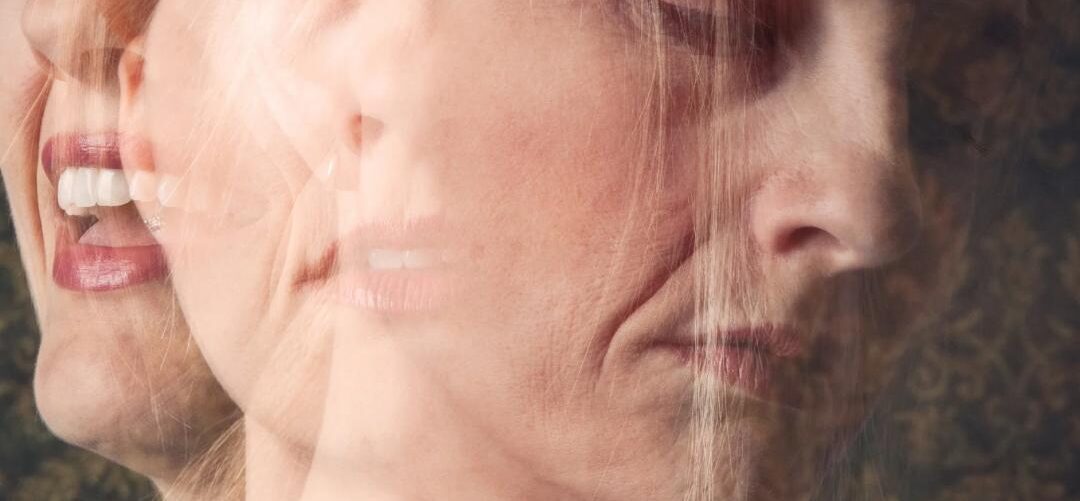Body Image Disorder: A Hidden Contraindication in Medical Aesthetics
Faramarz Rafie MD / Vancoderm Academy [VDA] / Vancoderm Clinic [VDCMed]
 Body image disorders represent a significant and increasingly recognized area of concern at the intersection of clinical psychology and medical aesthetics. As aesthetic procedures become more accessible and widely normalized—largely influenced by social media, celebrity culture, and evolving beauty standards—understanding the psychological dimensions of body image is critical for ethical and effective practice in aesthetic medicine. These disorders, particularly when undetected, can undermine the goals of aesthetic treatment and potentially result in harm to patients and practitioners alike.
Body image disorders represent a significant and increasingly recognized area of concern at the intersection of clinical psychology and medical aesthetics. As aesthetic procedures become more accessible and widely normalized—largely influenced by social media, celebrity culture, and evolving beauty standards—understanding the psychological dimensions of body image is critical for ethical and effective practice in aesthetic medicine. These disorders, particularly when undetected, can undermine the goals of aesthetic treatment and potentially result in harm to patients and practitioners alike.
In the world of medical aesthetics, helping people feel confident in their appearance is often at the heart of what we do. From anti-wrinkle injections to dermal fillers and skin rejuvenation treatments, aesthetic procedures are increasingly accessible and popular. However, amidst the growing demand lies a significant but often overlooked challenge: body image disorders, particularly Body Dysmorphic Disorder (BDD).
While physical health contraindications are routinely screened for, psychological health—especially body image issues—remains a grey area for many practitioners. Yet, identifying body image disorders is not only ethically important but crucial for safe and effective care.
Body image disorders are characterized by persistent, distressing preoccupations with perceived flaws in physical appearance, which are often minor or not observable to others. These concerns can significantly impair an individual’s social, occupational, and emotional functioning. Within aesthetic medicine—where procedures are elective and primarily cosmetic—there is a higher likelihood of encountering individuals with underlying psychological disturbances relating to body image. The most prevalent of these disorders include Body Dysmorphic Disorder (BDD), Muscle Dysmorphia (a subtype of BDD), eating disorders with body image disturbance, gender dysphoria with associated body dissatisfaction, and subclinical forms of dysmorphic concern that may not meet full diagnostic criteria but still impact patient well-being.
Body Dysmorphic Disorder (BDD) is the most clinically relevant of these conditions within the context of aesthetic practice. According to the Diagnostic and Statistical Manual of Mental Disorders, Fifth Edition (DSM-5), BDD is defined by a preoccupation with one or more perceived flaws in appearance, which are either slight or entirely imagined. Individuals with BDD engage in repetitive behaviors such as mirror checking, excessive grooming, or comparing their appearance with others. This preoccupation causes significant distress or impairment in social, occupational, or other areas of functioning, and is not better accounted for by concerns related to weight or body fat typically seen in eating disorders.
Prevalence rates of BDD are notably higher in aesthetic settings compared to the general population. Studies suggest that up to 15% of patients seeking cosmetic dermatology or plastic surgery may meet diagnostic criteria for BDD, compared to an estimated 1–2% in the general population. Unfortunately, BDD often goes undetected or is dismissed in aesthetic clinics, increasing the risk of poor treatment outcomes and patient dissatisfaction.
The presence of a body image disorder such as BDD presents several critical challenges in aesthetic medicine. Patients with BDD often have unrealistic expectations, pursuing repeated procedures despite previous interventions, and rarely achieving satisfaction with the outcomes. This ongoing dissatisfaction increases the risk of conflict, complaints, and potential litigation against practitioners. More importantly, performing cosmetic treatments without recognizing underlying psychological pathology can reinforce distorted self-perceptions, exacerbating the condition rather than alleviating distress. In some cases, interventions may contribute to worsening mental health symptoms, including depression, anxiety, or even suicidal ideation.
While aesthetic practitioners are not expected to diagnose psychiatric conditions, they must be able to recognize warning signs and make appropriate referrals. Several validated screening tools can assist in identifying body image concerns during consultation, including the Body Dysmorphic Disorder Questionnaire (BDDQ), the Dysmorphic Concern Questionnaire (DCQ), and the Appearance Anxiety Inventory (AAI). Clinical red flags may include an obsession with minor or invisible flaws, frequent mirror checking or avoidance behaviors, a history of multiple unsuccessful cosmetic procedures, dissatisfaction with previously successful outcomes, social isolation due to appearance concerns, and a strong desire for perfection rather than reasonable improvement.
In clinical practice, the aesthetic practitioner plays a pivotal role in safeguarding patient well-being by recognizing and managing body image-related risks. Practitioners should screen for psychological distress, set realistic treatment expectations, and refer patients to qualified mental health professionals when appropriate. It is also essential to maintain the ethical stance that treatment may be declined if it is believed that proceeding could cause psychological harm. This protects both the patient and the practitioner and reinforces the integrity of aesthetic practice.
Best practices for managing body image concerns in aesthetic settings include a holistic consultation approach that incorporates psychosocial assessment into the standard aesthetic evaluation. Clinics should implement clear ethical policies outlining how to manage suspected cases of BDD or other psychological contraindications. Multidisciplinary collaboration with psychologists, psychiatrists, or general practitioners is recommended for patients requiring further evaluation or treatment. Educating patients about the limitations of aesthetic procedures and promoting body acceptance can also be beneficial. Lastly, all members of the aesthetic team should undergo ongoing training in psychological awareness, ethical practice, and the use of screening tools.
Why Body Image Disorders Matter in Aesthetic Practice
Imagine this scenario:
A patient comes in, requesting multiple procedures to fix a “crooked” nose, “asymmetrical” lips, or “disproportionate” cheeks. You see no noticeable defect, but the patient is distressed and insists they “can’t leave the house” unless it’s corrected.
This could be Body Dysmorphic Disorder (BDD) — a mental health condition in which the person is obsessively preoccupied with perceived flaws in their appearance, often unnoticeable to others.
In aesthetic medicine, BDD is not just a mental health issue — it’s a major contraindication.
Body Image Disorder as a Contraindication:
1. Unrealistic Expectations
Patients with BDD rarely find satisfaction, no matter how technically successful a procedure is. Their distorted self-perception means they pursue perfection, which no aesthetic treatment can truly deliver.
2. Cycle of Repeat Procedures
Many will undergo multiple treatments or surgeries, often from different providers, chasing a result that doesn’t exist.
3. High Risk of Dissatisfaction and Regret
Even minor procedures can lead to major emotional fallout — including depression, social withdrawal, or suicidal ideation — when expectations aren’t met.
4. Increased Legal and Safety Risks
Patients with untreated BDD are statistically more likely to file complaints or initiate legal action, especially if they feel dismissed or dissatisfied.
How to Spot the Red Flags
While medical aesthetic professionals are not psychiatrists, you can and should recognize signs that may warrant concern:
Common Indicators of Body Image Disorder:
- Excessive concern with a minor or invisible flaw
- History of numerous cosmetic treatments or provider-hopping
- Distress out of proportion to the physical issue
- Daily rituals like mirror-checking, skin picking, or comparing features
- Social withdrawal or impaired functioning due to appearance
- Disappointment with previous successful procedures
- Requests that focus on “fixing” the self, not enhancing features
If several of these are present, it’s worth pausing the aesthetic plan.
Strongly Saying “No” — When Treatment Is Not the Best Medicine
As difficult as it may be, turning down a procedure is sometimes the most ethical and professional course of action.
Instead of rushing to treat, practitioners should:
- Gently educate the patient about their concerns and how they may stem from psychological, not physical, causes.
- Refer to a qualified mental health professional — especially one familiar with body image disorders.
- Document the consultation thoroughly and ethically explain why treatment is being declined at this time.
You’re not rejecting the patient — you’re prioritizing their well-being over a quick fix.
Best Practices for Ethical Aesthetic Care
- Incorporate Screening Tools:
Tools like the BDD Questionnaire (BDDQ) can help flag concerns during initial consultations. - Train Your Team:
Receptionists, nurses, and aestheticians should understand the basics of body image disorders and what red flags to look out for. - Set Clear Expectations:
Ensure all patients understand the limits of what a procedure can and cannot achieve. - Build Mental Health Partnerships:
Develop a referral network with local psychologists or psychiatrists specializing in body image or eating disorders. - Have a Policy in Place:
Develop a formal policy for handling patients with suspected BDD or body image disorders.
Thank you for joining us and for following along with our blog series. We truly appreciate your continued interest and engagement as we explore important topics in the field of medical aesthetics. At Vancoderm Academy Institute, we are proud to be a Designated Learning Institution (DLI), committed to delivering high-quality, evidence-based education to current and future professionals in the aesthetic industry. As a recognized leader in medical aesthetics education, our mission is to empower practitioners with the knowledge, clinical skills, and ethical foundation needed to excel in this rapidly evolving field. We thank you for being part of our learning community and look forward to continuing this journey of professional growth with you.
Until next time, take care and have a lovely day.

